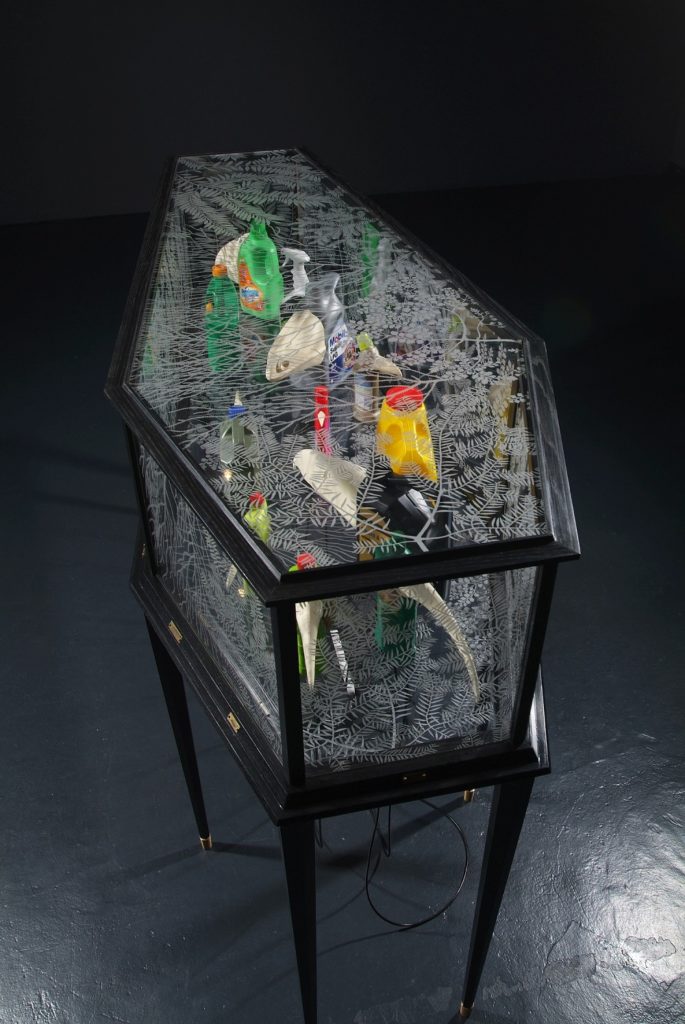CURATORS Paula Savage, Gregory O'Brien, Vivienne Webb PARTNER Museum of Contemporary Art, Sydney OTHER VENUES Museum of Contemporary Art, 6 March–1 June 2008; Christchurch Art Gallery, 13 November 2008–15 February 2009; Govett-Brewster Art Gallery, New Plymouth, 4 April–31 May 2009; Newcastle Art Gallery, 1 August–27 September 2009
Over the past four decades, crafty Adelaide artist Fiona Hall has explored the intersection of nature and culture, and tackled our disastrous impact upon our environment. Like a force field of conflicting energies, her art is shaped by the histories of colonisation, globalisation, and consumerism. Her sources range from the historical to the contemporary, from the global to the domestic, while drawing on literature, politics, finance, media, science, sexuality, and gardening. She is known for her use of diverse media and use of found or repurposed materials.
Downstairs, the works in West Gallery—including works from Hall's celebrated series Paradisus Terrestris—explore humanity’s relationship to nature and concepts of paradise. In East Gallery, works explore the domestic realm and consumer culture, alluding to the psychological and spiritual aspirations that coexist with everyday existence. Incorporating carved pieces of soap, Tupperware containers, and shredded Coca-Cola cans into her work, Hall rephrases and reinvents the most familiar of household items, giving them the allure and status of museum specimens or religious relics.
Upstairs, work highlights Hall’s awareness of the human body as complicated and contested. In South Gallery, with knitted torsos from B-movie videotapes and human forms in pressed aluminium, she evokes history and myths while making us aware of present political realities. In Tender (2003–5) and Mourning Chorus (2007–8), US-dollar bills and disposable kitchen containers are subsumed into a meditation on non-human life. These works highlight themes of shelter, cultivation, and social organisation evident throughout the show. In North Gallery, Hall’s works using paper currency, carved soap, nails, and beads bring together narratives of global trade and colonial history, enlightenment and exploitation.

















































































